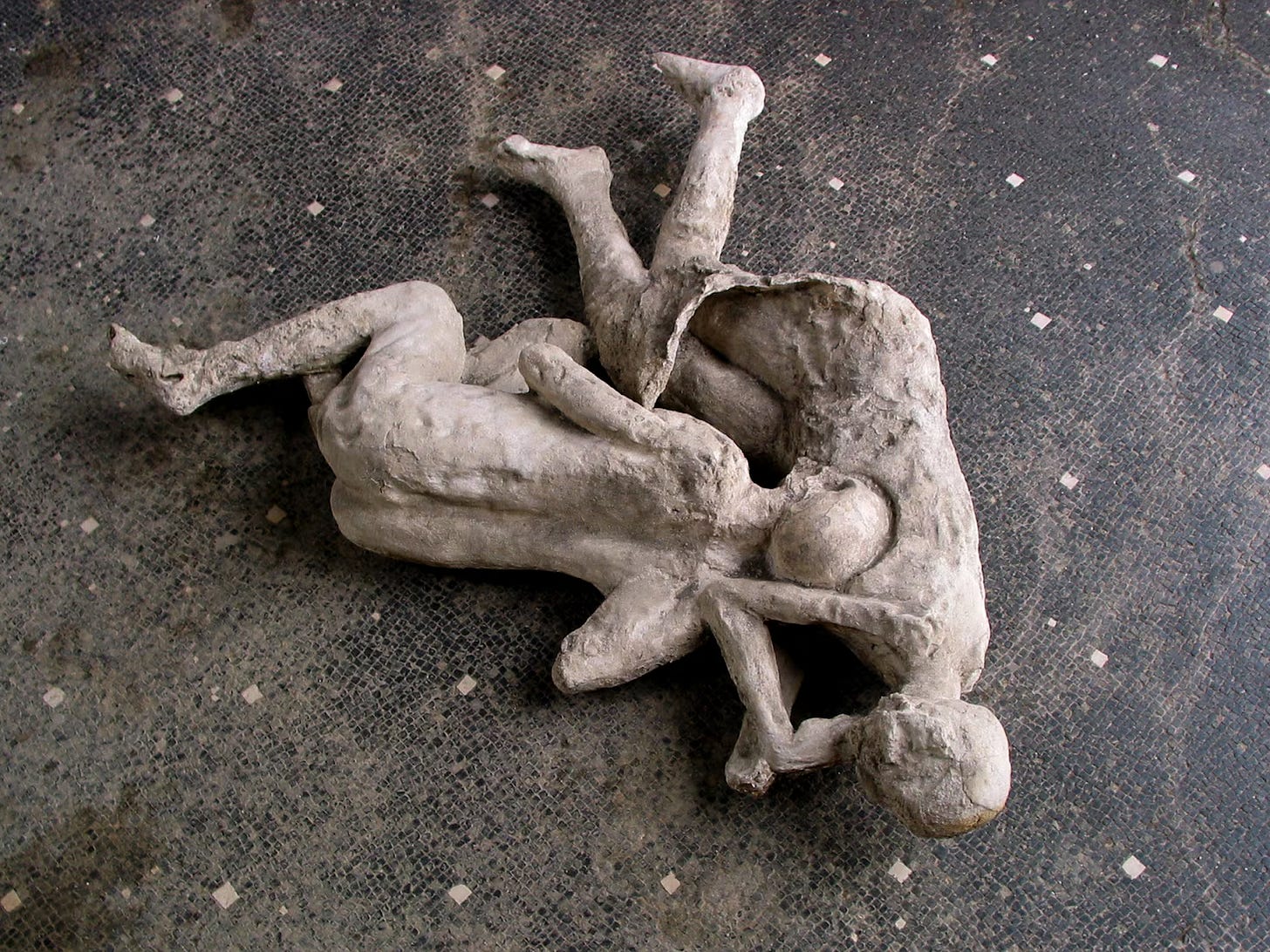How DNA analysis in Pompeii rewrote history
A story, quote and lesson about questioning our truths
What we “know” isn’t always what’s true
It’s a fact of life that we all hold assumptions—about history, about others, and even about ourselves. But how often do we pause to question whether those assumptions are accurate? For over two centuries, the story of Pompeii seemed to be one we could tell with confidence: a bustling Roman city frozen in time by volcanic ash, its victims caught in their final moments. Yet recent breakthroughs are proving that even the most well-documented stories can hide deeper truths.
For centuries, archaeologists and historians have pieced together stories about the victims: the child in the arms of an adult, long assumed to be a mother and her child; the two figures clutching one another, believed to be sisters sharing a final embrace. But recent DNA analysis has shattered these narratives. The adult in the bracelet is a man, and the child isn’t his son. The so-called sisters? One was male.
For years, these interpretations rested on assumptions—assumptions based on what seemed visually apparent, shaped by modern perspectives and biases. It’s easy to see how these misinterpretations came about. Humans are natural storytellers, filling in gaps with familiar narratives. A parent comforting their child, siblings offering solace in their final moments—these are stories that resonate with us. Yet they remind us of a broader truth: we often make sense of the world through the lens of our own experiences and expectations, not necessarily through objective reality.

The casts of Pompeii victims, frozen in their final moments, are both evocative and misleading. They illustrate how we, too, may create “casts” in our own lives—fixed impressions of people, situations, and even ourselves. How often do we assume we understand someone’s motives, challenges, or choices without probing deeper?
“Visual information does not provide all necessary information. I think that teaches us some humility and skepticism about our interpretations.”
David Reich, a geneticist at Harvard University who was involved with the study
As the archaeologists peeled back layers of volcanic ash to uncover hidden truths, we, too, must examine the layers of assumptions we carry. Are we seeing people as they are or as we expect them to be?
The revelations from Pompeii teach us a critical lesson: what we think we know may not be the full story. Whether it’s a stranger’s actions, a friend’s behavior, or even our own beliefs, our assumptions can obscure reality.
But there’s a silver lining. By questioning our biases, we can discover richer, more authentic connections. Like the researchers at Pompeii, we must approach the world with curiosity and a willingness to be proven wrong. Only then can we truly see.
So now I ask you:
Where in your life might a closer look or a fresh perspective reveal truths you’ve been missing?



Great reflection....
We all act based on our perceptions. And perceptions are many times misleading. Specially when related to people. And based on this article, I have given a thought that we really do not know what others are going through, and what makes them act the way they do, and react to it in a probably wrong way. I will start thinking more about what people might go through so that I can have better empathy. Thanks for this valuable lesson.